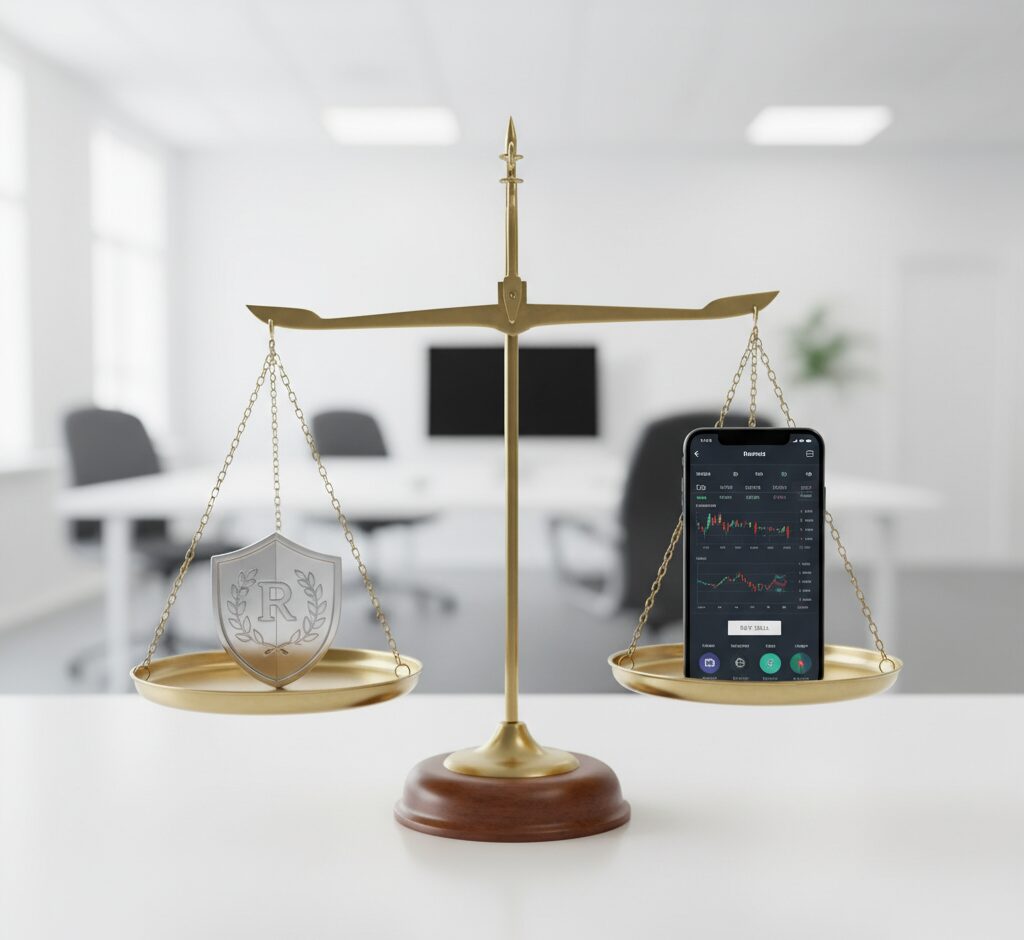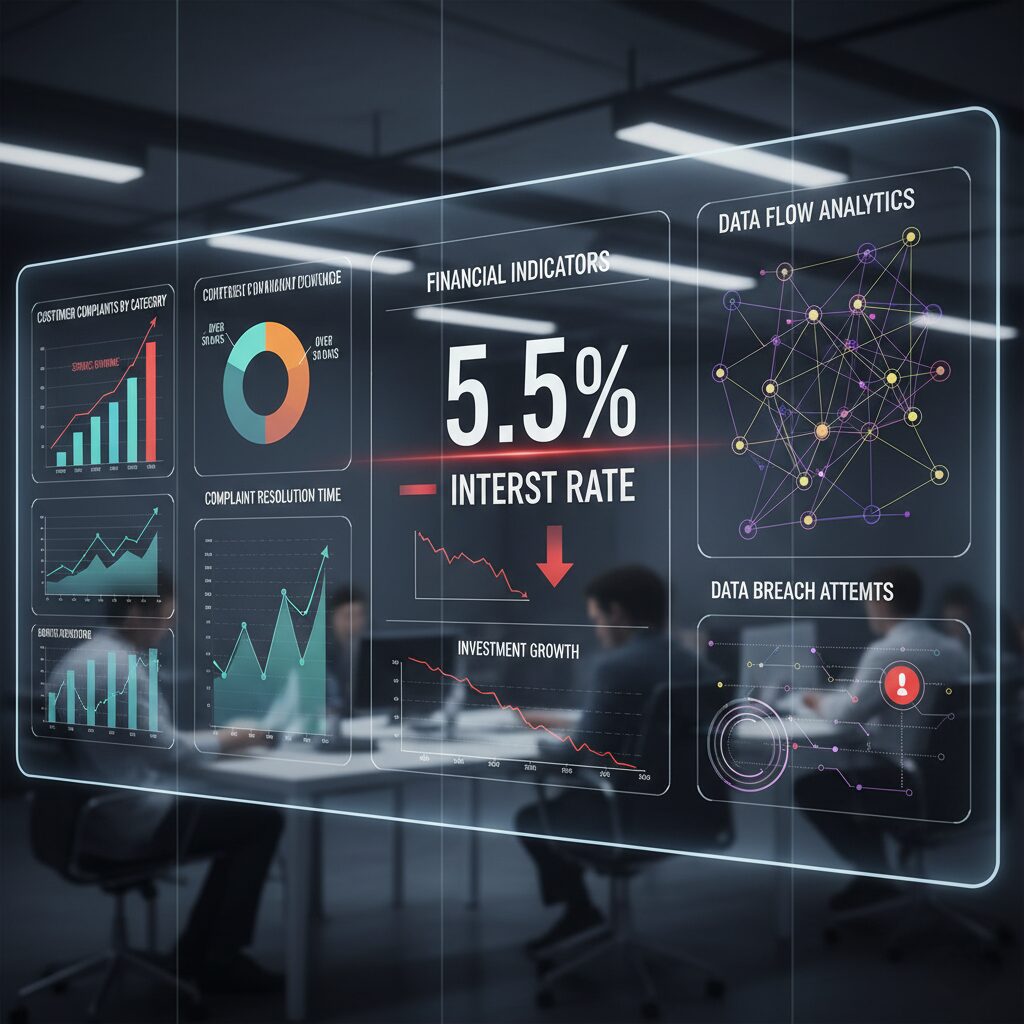Discover what is the controversy with Mariner Finance in 2025 and how Mariner Finance operates — deep dive into its business, lawsuits, and insights.
Table of Contents
ToggleIntroduction: The Lure and the Lawsuit
Imagine needing $5,000 to fix a leaky roof, fund a medical bill, or consolidate debt—with limited credit options. A door-to-door check arrives in your mailbox. You cash it. Suddenly, you owe 30 % interest. This is not fiction; it’s part of the business model that has landed Mariner Finance in hot water.
In 2025, the question on many lips is: “What is the controversy with Mariner Finance in 2025 and what does Mariner Finance do?” This article seeks to answer that comprehensively. We’ll explore Mariner Finance’s operations, dissect the controversies and lawsuits surrounding it, present data and expert analysis, and help you draw your own conclusions. You’ll gain actionable takeaways whether you’re a borrower, regulator, or observer of the consumer finance industry.
1. What Does Mariner Finance Do? (and How It Grew)

Mini-Story: From One Branch to Many
Back in 2002, Mariner Finance began as a small consumer lending firm in Maryland. Over two decades, it expanded into dozens of states, offering a suite of consumer finance products. Today, it pitches itself as a “community’s consumer finance company of choice.”
According to Bloomberg Mariner Finance, LLC reports.
Business Model & Core Products
Personal Loans & Installment Loans
Mariner offers unsecured personal loans—ranging typically from US$1,000 to US$25,000.
Auto Loans / Direct Auto Lending
They partner with dealers for “direct auto loan” programs, arranging financing for car buyers.
Home Improvement, Debt Consolidation, Unexpected Expenses
Borrowers often use loans for fixing homes, consolidation, weddings, or emergencies.
Refinancing & Loan Flipping
The company also refiances existing loans, sometimes encouraging consumers to “flip” into new loans.
Ancillary Products / Add-Ons
Mariner may add insurance, guarantee products, or other fees “bundled” into the loan.
How It Operates
Underwriting model
They assess credit, incomes, and state-by-state regulatory limits.
APR / interest
The APR range is high—often 20.99 % to 35.99 %, reflecting high-risk borrowers.
Branches & Digital platform
They maintain physical branches in many states and offer an online application and servicing portal.
Banking partnerships
For some states, Mariner partners with banks (e.g. WebBank) for backing or originations.
Looking to understand more about how lending and finance impact your daily money decisions? Explore these insightful guides from Finomiles: Smart money management
Growth & Footprint
As of 2025, Mariner is active in many U.S. states, though not every state allows its loan offers.
LendingTree notes that Mariner’s rates are on the higher side compared to some competitors.
Bankrate highlights that its shorter term loan structure can be an advantage—but with tradeoffs in cost.
Takeaway: Mariner Finance operates as a nonbank consumer lender, targeting borrowers with limited access to credit. Its revenue comes not only from interest but also from refinancing, fees, and bundled products.
2. The Multistate Predatory Lending Lawsuit (2022–2025)

The Lawsuit Emerges: Tactics Under Scrutiny
In August 2022, attorneys general from Pennsylvania, New Jersey, Utah, Oregon, Washington, and the District of Columbia filed a lawsuit alleging Mariner’s business practices were predatory and deceptive.
The allegations included:
“Live check” marketing: mass mailing checks that, if cashed, commit the borrower to a loan.
Burying add-on products: bundling insurance or warranties without clear consent.
Loan “flipping”: persuading borrowers to refinance multiple times to generate fees.
Excessive APR / fees: charging interest rates and fees well beyond what many borrowers can sustain.
Mariner denied wrongdoing and moved to dismiss.
Court Decisions & 2024 Ruling
In January 2024, a federal court in Eastern Pennsylvania denied Mariner’s motion to dismiss, allowing the multistate enforcement action to proceed.
Key points from the ruling:
The court affirmed state attorneys general have authority to enforce claims under the Consumer Financial Protection Act (CFPA), not just the CFPB.
Mariner’s defenses—such as that states lacked authority or that the claims were jurisdictionally flawed—were rejected.
The court allowed allegations of “excessive interest,” sale of add-ons, and loan flipping to remain in the complaint.
This decision signals regulatory momentum: state regulators may increasingly join forces to hold nonbank lenders accountable.
2025 Status & Developments
As of mid-2025, the case is ongoing. The lawsuit is still active, with discovery, motions, and potential settlement or trial to come.
Additionally, the Pennsylvania AG has recently secured a denial of Mariner’s motion to dismiss in a parallel state-level proceeding.
Takeaway: The multistate lawsuit remains the central controversy. It challenges fundamental practices of Mariner’s business model and tests the scope of state authority over nonbank lenders.
Consumer Financial Protection Bureau (CFPB) – Understanding Personal Loan Regulations Code of Federal Regulations
3. Emerging Controversies: Patents & Poaching Allegations

While the multistate suit is the headline case, 2025 has brought fresh legal challenges that compound concerns.
Patent Infringement Suit
In June 2025, LINFO IP, LLC filed a patent suit against Mariner in the Western District of Texas. The claim centers on U.S. Patent No. 9,430,131, covering a system for organizing unstructured data.
LINFO asserts that Mariner’s internal systems infringe on that patent—an unusual but increasingly seen tactic in fintech and data-driven finance.
This case is less about consumer protection and more about intellectual property rights—but it reflects growing legal pressure on the firm’s tech stack.
“No-Poach” / Solicitation Suit: Edelman Claim
In January 2025, Edelman Financial Engines filed an amended complaint accusing Mariner of illegally “poaching” financial planners, luring them to break non-solicitation agreements.
The lawsuit claims:
Mariner’s CEO personally called a planner under a non-solicitation clause and advised on defense strategies.
The poaching led to at least 851 Edelman clients moving, representing more than $621 million in assets under management (AUM).
This matter raises reputational as well as legal risk: it implicates improper competition and corporate governance.
The Broader Antitrust Case: Mariner Wealth
Though distinct from Mariner Finance, a related affiliate Mariner Wealth Advisors is embroiled in a class-action antitrust suit. Former employees claim a “no-poach” agreement between Mariner Wealth and American Century depressed wages and restricted hiring competition.
In 2025, those firms reached a $25.5 million settlement (pending court approval) to resolve those claims.
While not directly against Mariner Finance’s core lending entity, the parallel with Mariner’s corporate structure and culture adds to brand risk.
Takeaway: Mariner faces expanding legal pressure from patent claims to employment and competition lawsuits beyond traditional consumer lending critiques.
4. Data & Expert Insights: What the Numbers Reveal

Consumer Complaints & Regulatory Data
The Consumer Financial Protection Bureau (CFPB) maintains a complaints database. A 2025 complaint alleges Mariner is being sued in North Carolina for predatory lending practices.
Regional and state-level regulators continue to flag Mariner’s add-on product disclosures and interest-rate practices.
Financial / Credit Metrics
Credit Karma notes that while Mariner allows co-signers (helpful for borrowers with weak credit), the tradeoff is sharply higher APRs.
NerdWallet’s 2025 review says Mariner lacks some consumer protections (e.g., no autopay discounts) and its interest rates are steep.
Credible mentions that Mariner might accept applicants with a bankruptcy history—but the cost is very high.
Court Rulings & Regulatory Authority
The 2024 ruling rejecting Mariner’s motion to dismiss is considered a key precedent—affirming that state attorneys general can jointly litigate CFPA claims.
Analysts at Holland & Knight caution that regulators may feel emboldened to file similar suits against other nonbank lenders.
Expert Commentary
Legal analysts view the Mariner case as a test of the boundaries between federal and state enforcement of consumer financial laws.
Some consumer advocates frame Mariner’s model as exploiting vulnerable borrowers with limited credit access—a classic subprime lender strategy dressed as a community lender. (Implicit in the multistate complaint)
On the patent suit, tech-law commentators note that fintech firms should be cautious about data algorithms—they may inadvertently infringe hidden patents.
Here’s a quick comparative table summarizing risk vs reward: Metric / Factor Mariner’s Position / Offering Risk / Concern
APR / Interest Rates ~20.99 % to ~35.99 % High cost burden on borrowers
Product Add-Ons & Bundles Bundled insurance or warranties Alleged lack of informed consent
Refinancing / Loan Flipping Encouraged for fee generation Could trap borrowers in rolling debt
Regulatory Authority / Enforcement Challenges to state lawsuits Ongoing multistate enforcement, precedent impacts
Legal / Intellectual Risks Patent suit, employment lawsuits Additional exposure beyond core lending.
Want to know more about How Companies Raise Capital
Takeaway: The data and rulings suggest that as Mariner grows, it is encountering sharper scrutiny from regulators, courts, and consumer advocates. Its financial model is under stress—not just from borrowers but through legal and systemic risk.
5. Case Study: Borrower Experience & Real-World Impacts

Story: The “Live Check” Trap
A woman in Pennsylvania received a live check in the mail from Mariner. She cashed it and later realized she was locked into a 30 % interest rate loan she hadn’t fully understood. The state AG’s suit cites hundreds of similar stories—people unintentionally taking on loans they never “applied” for in a transparent way.
Scenario: Multiple Refinancings with No Relief
Consider a borrower named “John.” He takes a $10,000 loan from Mariner at 25 % APR, 60-month term. After 24 months, he struggles—Mariner offers to refinance into a new loan. John accepts; the new loan carries fees and interest. Over time, John ends up paying far more than originally scheduled, despite making consistent payments.
This is a textbook illustration of “loan flipping.” The multistate AG suit cites this practice as a profit strategy.
Outcome: Borrower Risk & Regret
Borrowers may end up in perpetual refinancing cycles.
The effective interest cost skyrockets.
Consumer credit scores may worsen if payments slip.
Some feel deceived, trapped, or powerless to reverse the costs.
From these examples, one sees the human cost—not just numbers—behind the lawsuits.
Takeaway: Mariner’s model may offer access, but for many borrowers, that access comes with unexpected financial pain and confusion.
6. Tips for Borrowers & Regulators: Navigating the Risk Landscape

If You’re a Potential Borrower
1. Read every disclosure. Look for add-on fees, insurance products, and “bundles.”
2. Ask for an APR in writing. Compare with other lenders (banks, credit unions)
3. Resist repeated refinancing. If they propose a refinance, check the cost-benefit.
4. Negotiate or decline add-ons. Many bundled products are optional.
5. Use credit unions or community lenders first. They often offer fairer rates.
6. Document everything. Keep copies of loan agreements, notices, and payments.
For Regulators & Policymakers
Use state AG enforcement combined with CFPA authority to hold nonbank actors accountable.
Mandate plain-language disclosures for bundled products and terms.
Cap repeated refinancing to prevent flipping abuses.
Encourage industry oversight and audits of algorithms and underwriting.
Monitor intellectual property litigation in fintech to avoid data entanglements.
These actions may help mitigate risks posed by high-cost, opaque lenders like Mariner.
FAQs
Q1: What is the controversy with Mariner Finance in 2025?
In 2025, the central controversy remains the multistate lawsuit alleging predatory practices live checks, add-ons, refinancing abuses and additional suits over patent infringement and employment poaching. The court’s 2024 ruling allowed the case to proceed.
Q2: What does Mariner Finance do?
Mariner is a nonbank consumer lender offering unsecured personal loans, auto financing, home improvement loans, and refinancing. It partners with banks for originations and uses branches plus online platforms.
Q3: Has Mariner Finance been sued or fined?
Yes. The multistate AGs have sued Mariner for unfair practices. There’s also a 2025 patent infringement suit and a poaching lawsuit by Edelman. A related entity also settled a no-poach class action.
Q4: Are Mariner’s interest rates high?
Yes. Mariner’s APRs typically range from ~20.99 % to ~35.99 %. Compared to bank or credit union rates, these are high reflecting risk to the lender and burden to borrowers.
Q5: Can a borrower avoid add-on fees or products?
Potentially, yes. Borrowers can request removal or refuse add-ons. But contracts may be unclear or pressure may be exerted. Disclosing and negotiating is key.
Q6: What precedent does the 2024 court ruling establish?
It affirmed that state attorneys general can bring CFPA-based enforcement suits against nonbank lenders, bolstering multi-state regulatory power.
Q7: Should borrowers avoid Mariner entirely?
Not necessarily. For some with limited alternatives, Mariner may be a viable but costly option. But borrowers must tread carefully: understand terms, refuse add-ons, and exit refinancing cycles when possible.
Conclusions
Mariner Finance sits at the intersection of access and abuse. On the one hand, it offers credit to borrowers often shut out of traditional systems. On the other, its business model—high APRs, refinancing cycles, bundled products—is under intense legal and regulatory scrutiny. The core question remains: is this model sustainable under emerging enforcement pressures?
What we know:
What does Mariner Finance do? They operate as a consumer lender offering loans, refinancing, auto and home financing.
What is the controversy with Mariner Finance in 2025? The multistate predatory lawsuit, ongoing patent and harassment suits, and antitrust exposure cumulatively test its practices.
Looking ahead, the outcome of the 2024 multistate case will reverberate through the nonbank lending sector. If regulators prevail, we may see stricter oversight, more transparency, and reform in consumer finance.
If you’re a borrower, tread cautiously—know your terms, document everything, and don’t let refinancing cycles trap you. If you’re a regulator or policymaker, keep your eye on these evolving models and learn from Mariner’s trajectory.

